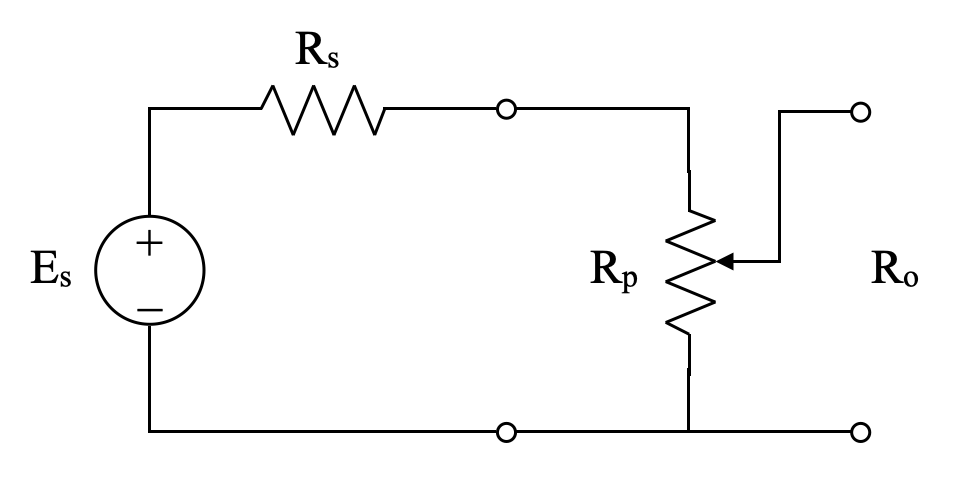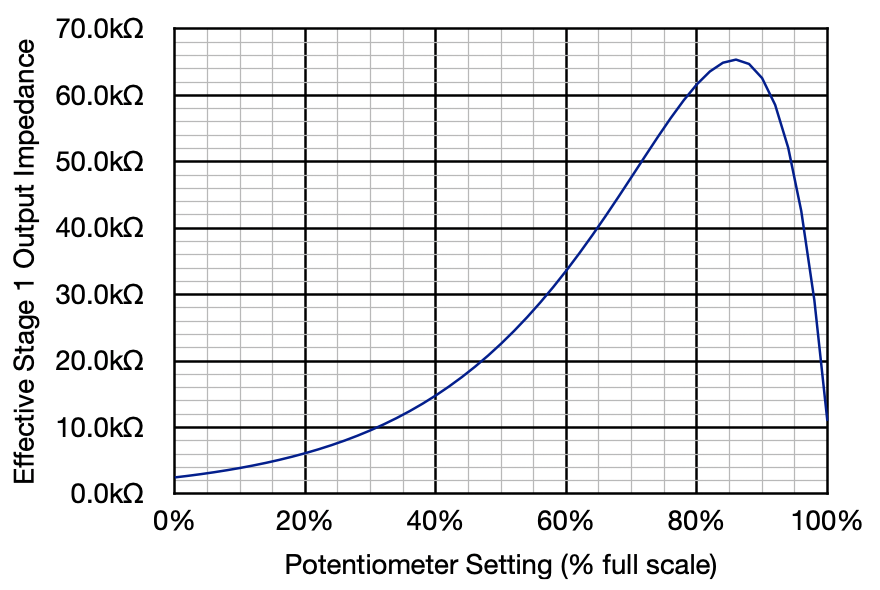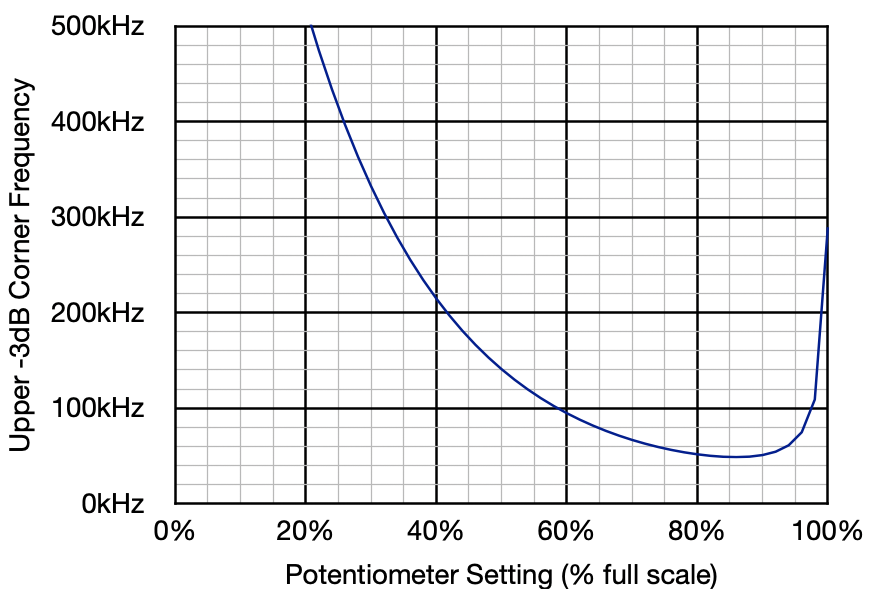Since I first introduced the concept for the “Universal Preamp” over ten years ago on the DIYAudioProjects forum, there has been almost constant discussion of my decision to place the volume control on the output of the preamp. I have been asked questions about it numerous times over the years. I have also had some “spirited discussions” with some who vehemently disagree with that design decision. Well, I thought it was high time to explain that decision once and for all, and to discuss exactly what this configuration means for preamp performance and output impedance.
The Universal Preamp “Origin” Story
First, a little background. The entire concept for the Universal Preamp arose from a forum thread in which the original poster was considering a simple preamp to provide some “warmth” to a system. He already had a schematic in mind and there was much discussion on the original design and many other options suggested. It was during these discussions when the proverbial gauntlet was thrown down with the following statement:
“In a future build … I may do a build which can switch from 12AU7 to 12AX7.”
It was with this prodding that the “Universal Preamp” was born. So the goal for the preamp was to provide some typical triode coloration to the sound and to allow for swapping different tubes without circuit changes.
Triode Distortion Characteristics and Design Decisions
To fully appreciate the topology of the preamp it is necessary to understand the distortion characteristics of triodes. When signal triodes are operated in a single ended configuration (such as the Universal Preamp) the distortion they produce is virtually all 2nd harmonic. In addition, the percentage of 2nd harmonic distortion is roughly proportional to the signal drive level. This means that as the signal increases, so does the proportion of 2nd harmonic distortion. If 200mV rms of input signal produces X% second harmonic then 400mV rms produces roughly 2X% second harmonic.
Now the 2nd harmonic is what is called the primary “Choral Harmonic”. Choral harmonics are the even order harmonics which provide warmth and fullness to sounds. So the goal of our design decisions should be to preserve these harmonics and to make sure that the levels are sufficient to provide the desired color. Since the triode in a single ended configuration already provides the tonal color, the design just needs to preserve that character.
Design Decisions and Control Placement
The key to the preservation of the even harmonics is to not attenuate the input to the tube. With a volume control set to 12 o’clock, or half way, the control provides about 20dB of attenuation (or a factor of 0.1) to the signal. This means that if the control is placed on the input, then the tonal color of the stage will be reduced by about 90%. Usually to a level that is inaudible in the final music. If the control is placed on the output then all the tonal color of the triode is preserved and the signal, already possessing all the color, can be attenuated to the desired level on the output.
This decision, to place the control on the output, preserves the desired tonal characteristics, but it is not without consequences. These consequences include a lower noise figure (i.e. less noise) for the preamp, a variable output impedance affecting control linearity and coupling losses, and potential impacts to the high frequency performance of a following stage.
Consequences of Output Side Volume Control Placement
Putting the control on the output lowers the noise figure of the preamp. This is simple physics. So from a noise perspective this is a good decision.
The second consideration is one of output impedance. The following figure is a simplified diagram showing the control as driven by the signal out of the preamp.
The Es voltage is the signal produced by the triode amplifier and the Rs resistance is the effective output impedance of the triode stage. The combination of the Es and Rs components is called a Thevenin Equivalent circuit. Using such equivalents greatly simplifies circuit analysis.
Visual inspection of the above figure shows that there is a portion of the volume control which is in series with the triode stage output impedance, Rs, and there is a portion which shunts the output to ground. This means that the combined output impedance is a parallel combination of Rs in series with the upper portion of the control, and the shunt portion of the control. This means that the output impedance of the preamp will vary with control setting.
This situation is further complicated by the fact that for linear “volume” control the potentiometer must have an exponential, or audio taper, transfer characteristic. The combination of the taper function and the variable voltage divider function can be difficult to visualize. Let’s start with the circuit values resulting from using the 12AU7 in the preamp circuit. In this case Rs is approximately 11.5kΩ and Rp is 250kΩ. Note that without the control on the output, the preamp output impedance would simply be 11.5kΩ. It is the placement of the control that complicates the situation. The following figure shows the combined preamp output impedance as a function of volume control position.
This curve starts relatively low but rises to about 65kΩ at 86% control position. Now the rule of thumb for impedances in voltage signal stages is that the output impedance of the driver stage should be not more than about 25% of the input impedance of the receiving stage. So strictly speaking, this preamp configuration should not be used on an amp with an input impedance lower than about 260kΩ. However, this condition only applies at that one setting. At the 50% setting the output impedance is closer to 23kΩ. Here our rule of thumb puts the required amp input impedance at only 92kΩ. It is informative to look at what happens when this rule is violated.
The rule in question (sometimes called the 4:1 impedance rule) was formulated to control voltage losses in cascaded stages. This 4:1 situation allows for approximately 2dB of attenuation in the output/input coupling due to impedance mismatch. The thought being that, since the whole point of cascaded stages is voltage amplification, the combined cascade should be designed to minimize losses. However, here we are talking about a specific stage to add adjustable gain to the system. It would seem, in this situation, that minimizing cascade losses is not a primary consideration.
Go back and consider the preamp with a 12AU7. This is the lowest gain option of all the possible tubes to be used in this preamp. With this tube, the Universal Preamp has an end to end gain of about 20dB (cathode unbypassed). When discussing control placement above, it was mentioned that a volume control set to 12 o’clock, or half way, provides about 20dB of attenuation (or a factor of 0.1) to the signal. This means that the preamp while using the 12AU7 provides signal attenuation with volume setting below half way, and signal gain with volume settings above half way. This means that the control setting range is approximately -20dB to +20dB.
If one were to use this configuration on an amplifier with a 100kΩ input impedance, the peak loss at 86% control setting would be about 10dB. However of that loss, about 9dB would be recovered in the last 4% of the control setting going to maximum. So the net effect is a minor deviation in the linear gain setting curve of the control. This is something about which most people would never need to worry. And if more gain is required earlier in the control range, moving to a slightly higher gain tube like a 12AV7 will provide it.
The other consideration is high frequency response due to the input capacitance of the amp to be driven. If the output impedance of the preamp is too large, then this can cause the upper frequency response corner to fall too low, suppressing high frequency response. Looking at the same preamp configuration above in combination with a power amp with an input impedance of 100kΩ and 50µµf is informative.
In this case the upper frequency response is satisfactory at most control settings. It is only the uppermost range where un undesirable result may be present. The following curve shows the upper frequency -3dB point verses control setting under these conditions.
Here the upper frequency corner is well above the audio range and only falls to about 49kHz at the worst control setting. Using the higher gain tubes lowers this frequency a small amount, but even with the 12AX7 it is still well above the audio range.
Conclusion
I hope that this finally answers the question about placing the volume control on the Universal Preamp output. This configuration should be acceptable for use with almost any vacuum tube power amp with an input impedance of approximately 100kΩ or more.
As always, questions and comments are welcome.
Part II of this discussion can be found at this link: About that Volume Control – Part II




Pingback: About that Volume Control – Part II | Cascade Tubes
Thank you so much for all of your work! I’m buying parts for the preamp, but wondering if I can omit the output side volume control if my tube power amp has a volume control.
Absolutely. You can replace the output volume control with a simple resistor of the same value. Alternatively you can install the volume control and simply leave it at maximum setting when using it with the power amp.
Hi, I’m thinking of building this to drive single ended power amplifiers. I currently use a transformer volume control for attenuation, which I would like to continue to use. In this circuit can I just omit the 250k potentiometer and take the output to my TVC from the other side of the 0.47uf coupling capacitor?
You need to be careful. The AC input impedance of your TVC will appear in parallel with the 100kΩ load resistor in the preamp. This causes AC load line rotation. The 4S was designed to tolerate a 250kΩ volume control load on the output and still operate into an amp impedance of >= 100kΩ.
Since I don’t know what is the AC input impedance of your TVC, I can’t comment on whether it will work or not. If your TVC ahas an input impedance larger than ≈72kΩ it should work. You’ll have to run the impedance calculations on your TVC to be sure.
Thanks Matt, that’s very helpful.
Much appreciated,
Steve
Hi again, so theoretically, if the 250k pot was used but run wide open, then the output fed through a TVC, all would be good? Or better, a 250k resistor to ground after the coupling capacitor to emulate the pot being run wide open?
Quote: A TVC output impedance is always calculated from the equipment source, and is always lower than the source output impedance.’
Thanks,
Steve
Hi again, so theoretically, if the 250k pot was used but run wide open, then the output fed through a TVC, all would be good? Or better, a 250k resistor to ground after the coupling capacitor to emulate the pot being run wide open?
Quote: A TVC output impedance is always calculated from the equipment source, and is always lower than the source output impedance.’
Thanks,
Steve
Such an excellent post! I bookmarked this so I can easily show it to others in my build group (self referred to as a “Kollective”).
Thank you Matt.
Glad I could be of assistance to you and your “Kollective”. 🙂
Greetings Matt, I’m new to building tube amps and have begun putting together your 4S. I plan to use a stepped attenuator using resistors for volume control. For the load resistor I could only find a 240k value (not 250K). As you mentioned, value matters… will a 10K difference be a problem?
Thanks for such a great resource!
Go right ahead and use the 240kΩ control. It will not make any perceptible difference in the performance of the unit.
Pingback: Tube “Color” Preamp for Solid State Amplifiers | Cascade Tubes
Thanks Matt, a great explanation. You employed a similar approach I think to the wide band 300b monoblock circuit which works well and sounds great. I hear plenty of high frequencies when they appear in the music and would probably hear more if a bit younger. Does the choice of the potentiometer value, for instance, 100k v 250k have some influence?
Yes the value of the potentiometer does matter. The potentiometer is in parallel with the plate load at AC. If the value of the potentiometer is too small it will cause excess rotation of the load line and introduce distortion because of the curvature of the transfer characteristic. If it’s too large then the output impedance can become excessive. So the potentiometer value is a critical design tradeoff.
In the 6AS7 set circuit you have placed the pot ahead of the preamp section of the 12AU7. Was this decision because of the impedance mismatch described above?
Not really. The 6AS7 power stage has a fairly low Miller capacitance at this bias point (≈27µµf). It however has a Ds≈2.5%/W. Given this, I did not feel that any additional preamp tonal shaping was required. By placing the volume control in front of the cascaded drivers, the amp color remains primarily due to the power stage design.
Based on my experience with commercially made preamps, the way you have it is the normal way it is done. The preamp has a fixed gain, and the volume or level control adjusts the amount of preamp output sent to the power amp. One thing I have seen on occasion is a cathode or emitter follower after the level control to give a consistent low output impedance.
I have a design for a version of the 4S with a cathode follower on the output for driving solid state amps. I’ve just never built it because almost all my amps are vacuum tube with relatively high input impedances.
I would like to see that cathode follower schematic if you have it handy. It seems that many tube preamps are being built to give a tube sound to music from a solid state amp.